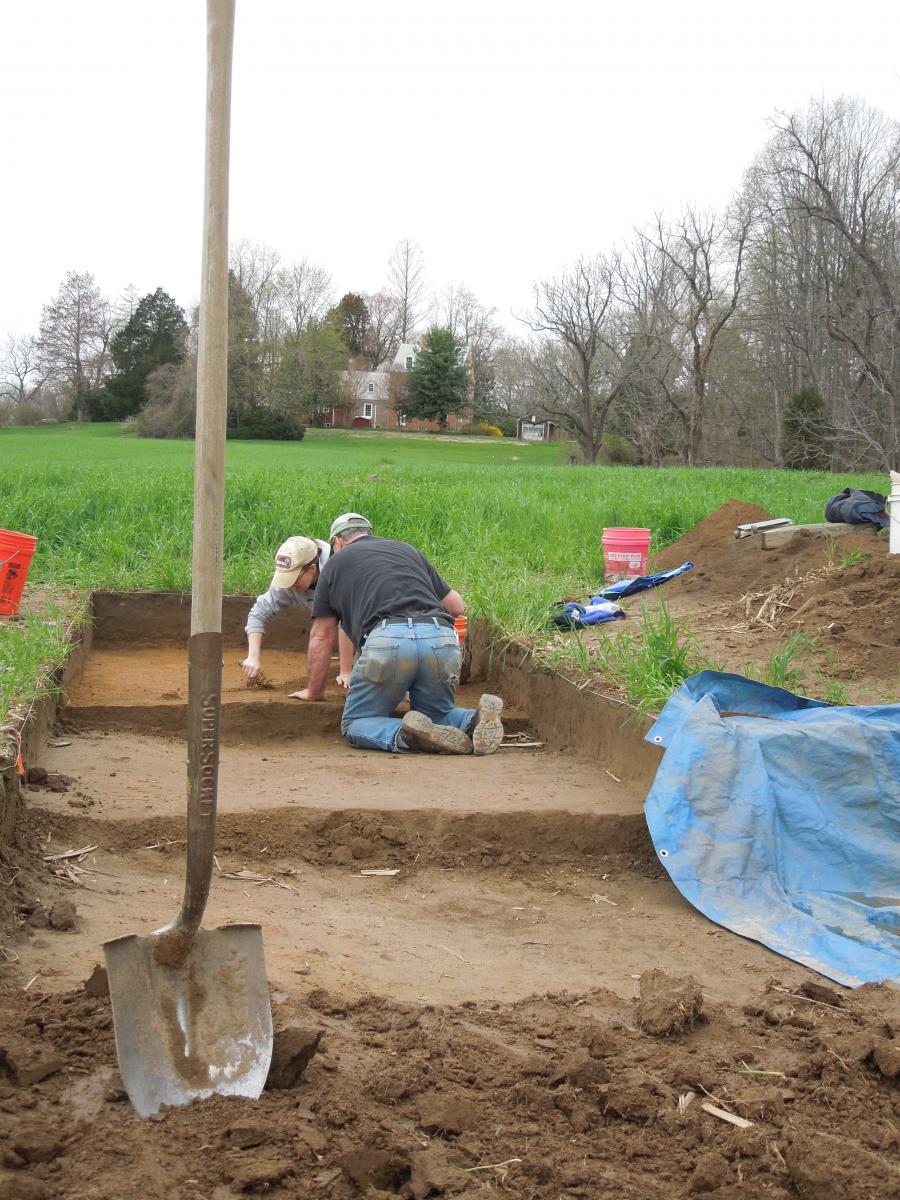Research ProjectHousehold Provisioning
Affiliated Labs
Project Goal
Providing food for a household stresses the ecosystem of which the household is a part. SERC’s Environmental Archaeology Laboratory recovers and documents dietary differences among socially differentiated households to model those stresses.
Description

SERC’s Environmental Archaeology Laboratory has found, and continues to search for, household trash deposits, or middens, from sites dating between 3,000 years ago to 1950. Currently the team has tested middens on the SERC campus from two plantation sites dating between 1660 and the 1680s, The Java plantation and an associated slave house site (both middens dating to the 1820s through 1840s), and two tenant farmer houses dating between 1900 and 1940.
Working in 2-meter squares, excavators recover artifacts, faunal material, and botanical material. Our Participatory Science team prepares these materials in the laboratory for cataloguing. Kiley Gilbert has identified large samples of the faunal material from the two 17th-century sites—Shaw’s Folly and Sparrow’s Rest—and calculated the richness and heterogeneity of the animal species represented in the assemblages. Valerie M. J. Hall continues to explore those data in greater depth.
Jocelyn X. Lee has conducted similar work on faunal material from an urban house site in the one-time Colonial Period port town of Port Tobacco in central Charles County, Maryland. Her analysis reveals a much richer and heterogeneous assemblage of mammals, birds, and fishes in the early 18th-century deposits of the Burch House site on the south side of town.
Principal investigator Jim Gibb has broadened the context of household provisioning to include two early 18th-century plantation sites in the central uplands of Anne Arundel and Calvert counties—the Idlewild Farm site in Davidsonville, and the Roberts site in Prince Frederick, Maryland. Both sites yielded species lists comparable to those from the Colonial sites on the SERC campus, including saltwater fishes. Clearly, even households living several miles from the Chesapeake Bay and its tributaries accessed marine resources.
The team continues to identify and test middens, creating time series data with which to explore both regional trends and variability within the Rhode River communities. Comparative data from sites elsewhere in the region aides in our understanding of the larger social contexts in which Rhode River households operated.

